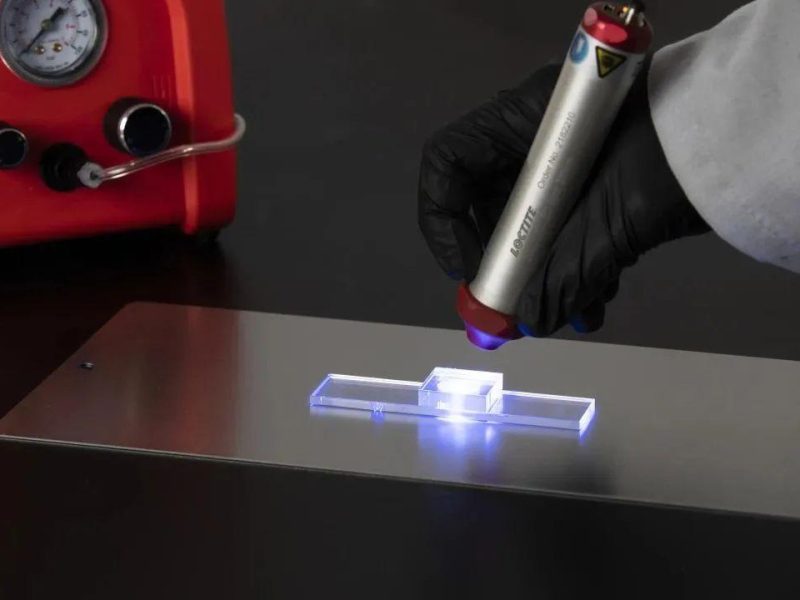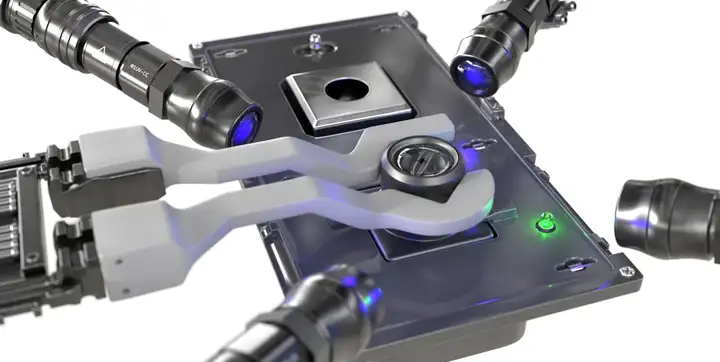
Light-Curing Coatings: Properties, Principles, and Reactions
Properties of Light-Curing Coatings
Light curing is a chemical process whereby a light-induced chemical reaction occurs directly. The chemical method utilises the bonding force generated by the chemical reaction to achieve the moulding purpose, with the majority of the resulting materials being thermosetting materials. The application of light curing technology to painting processes offers a number of advantages.
Rapid curing rate
In comparison to other coating types, light-curing coatings exhibit the most notable rapid curing rate, with the fastest curing time reaching 0.05 to 0.1 seconds. This is currently the The coating is the fastest to dry and cure of all types of coating, typically requiring only a few seconds or tens of seconds of UV lamp irradiation at a number of kilowatts of power to achieve complete curing. This is in accordance with the requirements of use. The conventional solvent-based coatings require an extensive drying period, often spanning several hours or even days. This undoubtedly represents a significant improvement in productivity, a reduction in the space required for semi-finished products, and a more effective means of meeting the requirements of large-scale automated production. Furthermore, the quality of light-curing products can be more readily guaranteed.
Environmentally friendly
A further advantage of light-curing coatings is that they contain no volatile solvents, thus offering an environmentally friendly alternative. Solvent-based coatings typically comprise 30% to 70% inert solvents, which are largely volatilised into the atmosphere during the drying process. This results in significant cumulative environmental hazards. The light-curing coatings are distinct in that the majority of the components involved in cross-linking polymerisation are incorporated into the film layer upon exposure to light, thereby becoming part of the cross-linked mesh structure. This can be regarded as a 100% solid content of the coating, a feature that is exclusive to powder coatings in the traditional coatings. Consequently, the pollution of the air, the harm to the human body and the danger of fire are all reduced.
Energy Saving
The energy consumption of solvent-based coatings is approximately one-tenth to one-fifth that of UV light-curing coatings. It is not feasible to expect light-curing coatings to exhibit rapid cold curing characteristics at room temperature, as is the case with other coatings. Baking and powder coatings require the application of heat following the painting process in order to facilitate the evaporation of solvents and the chemical cross-linking reaction. In comparison, light-curing coatings represent a significant energy saving. The efficacy of light-curing coatings is contingent upon the utilisation of ultraviolet light. The rapid curing rate results in a notable enhancement in energy efficiency.
Can be applied to a variety of substrates.
Light-curing coatings can be applied to a variety of substrates, including wood, metal, plastic, paper, leather, and more. The use of light curing is sometimes precluded due to the potential damage that high-temperature heat curing can cause to heat-sensitive substrates, such as plastic, paper, and other electronic components. In certain instances, light curing technology represents the only viable option that meets the requisite standards.
Low Cost
Low-cost light curing is an effective alternative to traditional heat curing. Unlike traditional heat curing, light curing does not require the substrate, material, or surrounding space to be heated, nor does it involve the evaporation of water or organic solvents used in the diluted material. In contrast to conventional thermal curing, which necessitates the heating of the substrate, material, surrounding space, and the evaporation of water or organic solvents, this process conserves a considerable amount of energy. Consequently, the high effective content of light-curing coatings results in a significant reduction in actual consumption. Furthermore, the initial investment in light-curing equipment is relatively low, automation is straightforward to implement, and significant savings can be made in terms of capital expenditure, while the environmental impact of the plant is also reduced.
Summary
In conclusion, light-curing coatings represent a highly efficient, environmentally friendly, energy-saving, and high-quality class of light-curing materials, widely regarded as a green industrial material and technology par excellence for the 21st century. In light of the growing global awareness of environmental protection and the increasing legislative restrictions on air emissions, the significance of light-curing coatings is becoming increasingly evident. The reduction of VOCs is a priority in the United States, Europe, Japan and elsewhere, and the use of light-curing technology is an important factor in this regard. In China, the rapid expansion of the economy and the growing importance of environmental protection have led to an increased focus on environmentally friendly “green technology,” particularly in the field of light-curing coatings. Research, development, and application of these coatings will likely become more extensive and prevalent in the coming years.

Principle of light curing
The chemical reaction of light-curing coatings under light irradiation is a representative example of a photochemical reaction. The fundamental principles governing photochemical and thermal chemical reactions, and the associated chemical changes, are analogous to those observed in other chemical reactions. However, the distinct nature of light and heat as forms of energy gives rise to differing roles for the material in question. The application of light can result in alterations to the distribution of electrons within the molecular structure of a given substance, thereby inducing an excited state. Conversely, the introduction of heat can only lead to a change in the amplitude of molecular vibrations, without affecting the distribution of electrons. Consequently, the molecules remain in their ground state. Consequently, the fundamental distinction between photochemistry and thermochemistry lies in their respective focus. Photochemistry delves into the realm of excited-state molecular dynamics, elucidating the underlying principles governing chemical transformation. In contrast, thermochemistry concentrates on the study of the fundamental, ground-state molecular properties and the laws governing chemical change. Furthermore, thermochemical reactions are characterised by a single process, namely the absorption of heat energy directly from ground state molecules to facilitate chemical reactions. A photochemical reaction typically comprises two distinct reaction processes. Initially, the molecules undergo an excitation process, whereby they absorb light energy from the ground state molecules and transition to an excited state. Subsequently, the excited state molecules engage in a second chemical reaction process, resulting in the generation of a new product or the transfer of energy or electrons to form an active substance (such as free radicals or cations). This chemical reaction ultimately yields a new product.
Types of light curing reactions
The term ‘light curing’ is used to describe the process by which a photopolymer system undergoes a phase change from a liquid to a solid state when exposed to light. This process results in the formation of an insoluble polymer from a soluble precursor. The ability of photopolymers to undergo light curing is arguably their most significant characteristic, forming the foundation for the development of numerous industrial products, including light-curing coatings, light-curing inks, and light-curing adhesives. The transformation of light-curing coatings from liquid resins into solid, dry films is a photochemical process that can be described as a chain polymerisation reaction. This reaction increases the molecular weight of the system through polymerisation, forming a crosslinked network that transforms it into a solid, dry film. The majority of photoinitiated polymerisation reactions can be classified as either photoinitiated radical polymerisation or photoinitiated cationic polymerisation.
